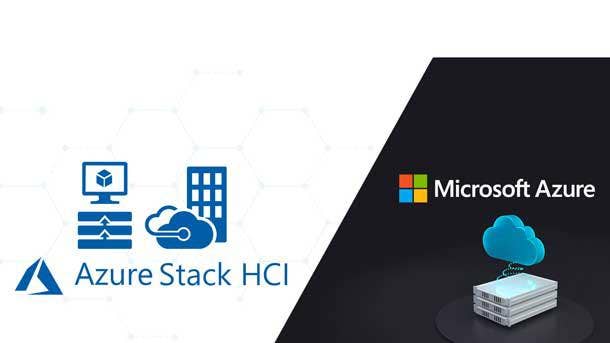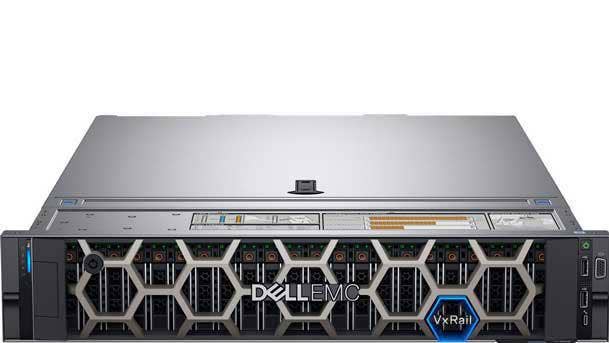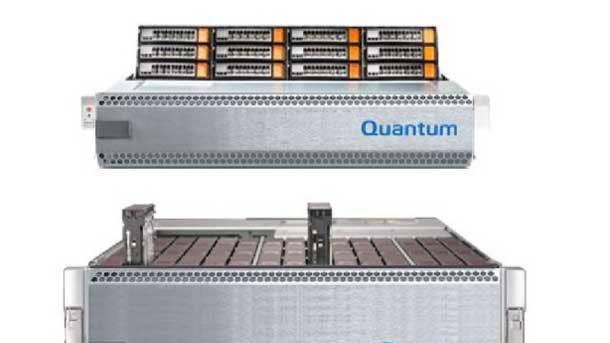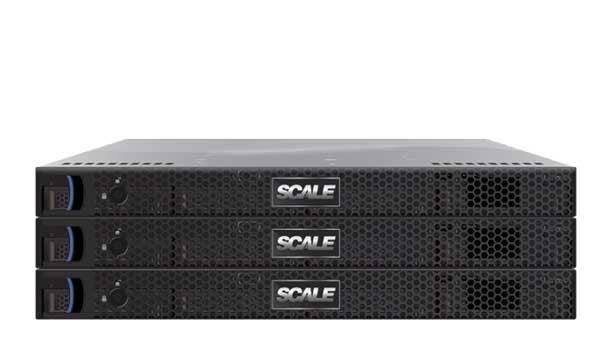10 Cool Hyperconverged Infrastructure (HCI) Systems In 2022
From Dell VxRail and HPE SimpliVity to Quantum VS-HCI and Scale Computing HE500, CRN breaks down 10 of the hottest hyperconverged infrastructure systems to know in 2022.

10 HCI Systems To Watch In 2022
Businesses throughout the globe are leveraging hyperconverged infrastructure (HCI) to solve the increasing need to improve IT scalability, enhance disaster recovery and data protection capabilities, reduce operating expenses and move toward a hybrid cloud environment.
HCI combines compute, storage and networking with unified management software in a scale-out architecture. The market is being fueled by the rising demand for better data security and disaster recovery solutions as well as businesses need to boost critical workload performance.
In terms of hyperconverged infrastructure hardware systems, worldwide market share leaders like Dell Technologies and Hewlett Packard Enterprisev launched several enhanced offerings in 2021.
CRN breaks down ten of the hottest HCI systems and architectures that channel partners and customers need to know about as 2022 kicks-off. ( Click here to view the HCI market leaders in terms of software.)

Arcserve N-Series With Nutanix And Sophos
Arcserve recently launched its new Arcserve N-series systems that combine the company’s UDP data protection technology, Nutanix’s Mine platform for private cloud storage and Sophos Intercept X Advance cybersecurity for server machine learning-based software for protecting against malware.
The N-Series provides next-level data protection to enterprises for hyperconverged infrastructure.
The system includes Arcserve’s full UDP technology to protect data from any sources, making it useful for businesses using Nutanix HCI as their primary infrastructure and those running VMware or other HCI environments looking for scalable data protection, which also includes Sophos’ ransomware defense solution. The company says the new system provides an unmatched hyperconverged secure solution from a single vendor.

Azure Stack HCI
Microsoft’s Azure Stack HCI is focused on providing a hybrid cloud solution that integrates on-premises and edge, virtual machines (VMs), and container services into the Azure cloud. The solution uses the same software-defined compute, storage and networking software as Azure Stack Hub.
The Azure Stack HCI runs Windows and Linux virtual machines in either a data center or an edge environment. Azure Stack clusters contain between two and 16 servers, which run an operating system that is specifically designed for hyperconverged infrastructure. Microsoft includes a deployment wizard to quickly set up an Azure Stack HCI cluster and connect to Azure to leverage native integration with core Azure services.
The Azure Stack HCI is offered as a subscription-based solution based on the version of Hyper-V and HCI stack used in the Azure cloud.

Cisco Hyperflex HX-Series
Cisco’s Hyperflex HX-Series unifies compute, storage, and networking with cloud management engineered specifically for both customers’ core and edge computing needs.
Cisco recently added Kubernetes and an instance of Kernel-based virtual machine (KVM) to create an Intersight Workload Engine service that functions as a Cisco operating system for its Hyperflex portfolio.
The HyperFlex HX Data Platform is a high-performance, extensible distributed file system that supports multiple hypervisors with a wide range of data management and optimization services.

Dell EMC’s VxRail E Series With New PowerEdge Servers
Dell Technologies has been the world leader in hyperconverged infrastructure with VxRail, jointly engineered and integrated with VMware, for years.
Powered by the latest Dell PowerEdge servers and AMD and Intel processors, the 1U/1 Node VxRail E Series is also available in a single socket server with up to 64 cores, NVMe option and T4 GPUs for a wide range of use cases. Each appliance has one node per 1U chassis, enabling clusters to use minimal storage and compute resources with options to expand, one rack unit node at a time.
In 2021, Dell added 50 percent more PCIe slots to the VxRail E Series as we as released new self-service tools for its VxRail HCI System Software that will enable customers to validate, orchestrate and automate cluster deployment on their own time.

Dell EMC’s VxRail V Series With New Nvidia, PowerEdge Servers
Dell EMC’s VxRail V Series offers a virtual desktop infrastructure (VDI)-optimized 2U one-node platform with GPU hardware for graphics-intensive desktops and workloads. Use cases include VDI, artificial intelligence and machine learning, computer-aided engineering (CAE), seismic exploration, complex DCC effects, 3D medical imaging, photorealistic rendering, and data analytics.
Dell revamped the VxRail V Series last year to now offers Nvidia A40 or Nvidia A100 Tensor Core GPU options to provide greater performance and simpler deployment for demanding applications such as artificial intelligence and machine learning.
Dell’s new line PowerEdge servers, which include the newest chip innovation from AMD and Intel, are now available for its VxRail V Series systems. VxRail will be updated with future VMware technology—such as when new versions or releases of NSX-T and Tanzu are launched—in a single upgrade cycle.

Hitachi UCP HC Series
The Hitachi Unified Compute Platform Hyperconverged (UCP HC) combines compute, storage and virtualization into one hyperconverged infrastructure appliance. Hitachi’s UCP HC systems aim to create easy-to deploy, all-in-one solution powered by VMware vSAN that offers agility and simplicity.
Hitachi provides automated firmware upgrades for non-disruptive upgrades across the HCI stack including networking switches. It also provides native and optimized data protection to ensure continuous operations.
The UCP HC family includes several offerings in 1U or 2U form factors powered by Intel Xeon processors. The solution offers up to 3TB of memory per node with optional Intel Optane DC Persistent Memory. Deliver consistent high-performance to support critical apps including SAP HANA and improve resource utilization.

HPE SimpliVity With 4.1.0 Update
Powered by HPE InfoSight, HPE SimpliVity is ideal for edge, remote office, VDI, and general virtualization use cases. The HCI offer provides VM-centric management and mobility, built-in backup and disaster recovery, and data efficiency.
In March, HPE turned up the edge computing heat with SimpliVity hyperconverged infrastructure edge computing enhancements including support for Kubernetes containers and cloud-native backup. The new HPE SimpliVity 4.1.0 update enables SimpliVity to run both container and VMware virtual machine workloads at the edge with a Kubernetes container plugin and adds cloud-native backup from multiple edge sites through HPE Cloud Volumes.
Additional SimpliVity enhancements also include centralized application and data replication support from the HPE StoreOnce appliance for compliance and long-term data retention.

Lenovo ThinkAgile VX Series With AMD
Lenovo’s ThinkAgile VX Series of hyperconverged infrastructure platforms combines Lenovo servers with AMD EPYC 7003 Series processors and VMware vSAN.
The VX Series offers configuration flexibility to meet any use-case, and all systems are available in all-flash or hybrid configurations. Scaling compute or storage capacity can start with as few as 3 nodes.
Lenovo’s ThinkAgile VS Series come in a wide range of platforms including the VX 2000 Series for general-purpose 1U 1-node for SMBs; the 1U and 2U Lenovo VX 3000 Series optimized for compute heavy applications; VX 5000 Series for storage-dense use cases optimized for long-term and high-capacity storage requirements; and the VX 7000 Series of 2U and 4U platforms for the highest-performance workloads like databases and coloration.

Quantum VS-HCI Series
The Quantum VS-HCI Series provides purpose-built hyperconverged infrastructure for surveillance recording and video management, providing a single platform for multiple physical security workloads. The HCI system uses automation to simplify management, provide high levels of resilience, and ensures scaling and maintenance are easy.
Quantum doubled down on the HCI market last year via its acquisition of Pivot3. In December, the company launched a new version of its VS-HCI Acuity software platform that included an upgraded orchestration manager, a 50 percent faster drive rebuild performance, additional artificial intelligence for monitoring and alayzsis, as well as support for VMware ESXi 7.
The VS-HCI Series is available as either a 2U rack mount server, or an ultra-dense 4U, 60-drive rack mount server. Multiple servers can be connected in an HCI cluster for redundancy, and the VS-HCI Series software provides for failover between servers.

Scale Computing HE500
Scale Computing’s HE500 series is a set of right-sized HCI appliances that provide enterprise-class features to remote locations and boost edge computing capabilities with disaster recovery.
Each HE500 appliance model can be deployed quickly, managed locally or remotely, and is fitted with self-healing technology to provide almost instant failover and minimal downtime. In addition, the HE500 series provides a low-cost option for disaster recovery infrastructure that is easy to deploy, easy-to-use, and runs disaster recovery workloads reliably.
Each of the five models in the HE500 series is pre-installed with Scale Computing’s HC3 HyperCore Software, providing an intelligent and automated layer that results in simple to operate functionality and the necessary performance to meet modern edge computing requirements.